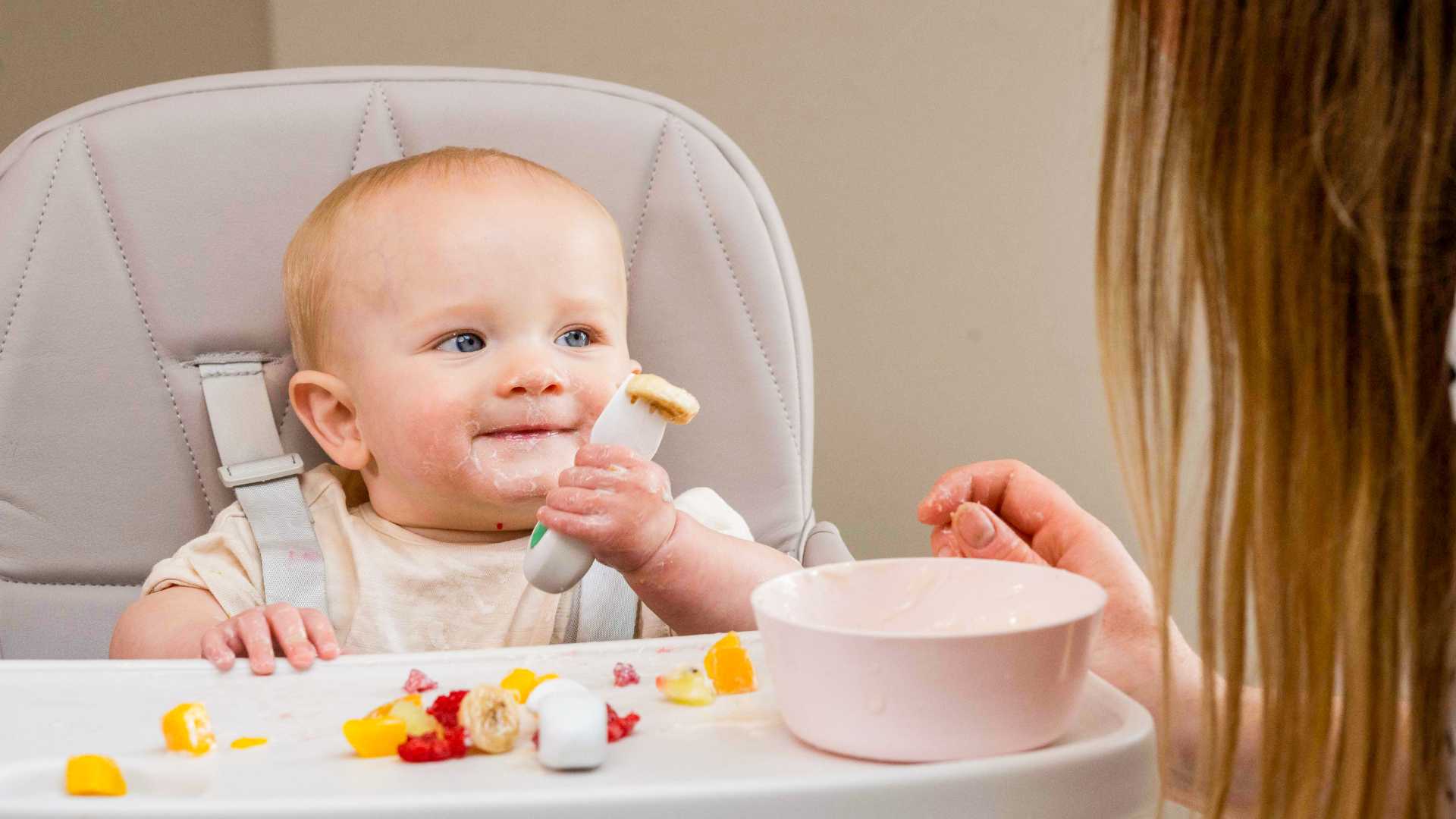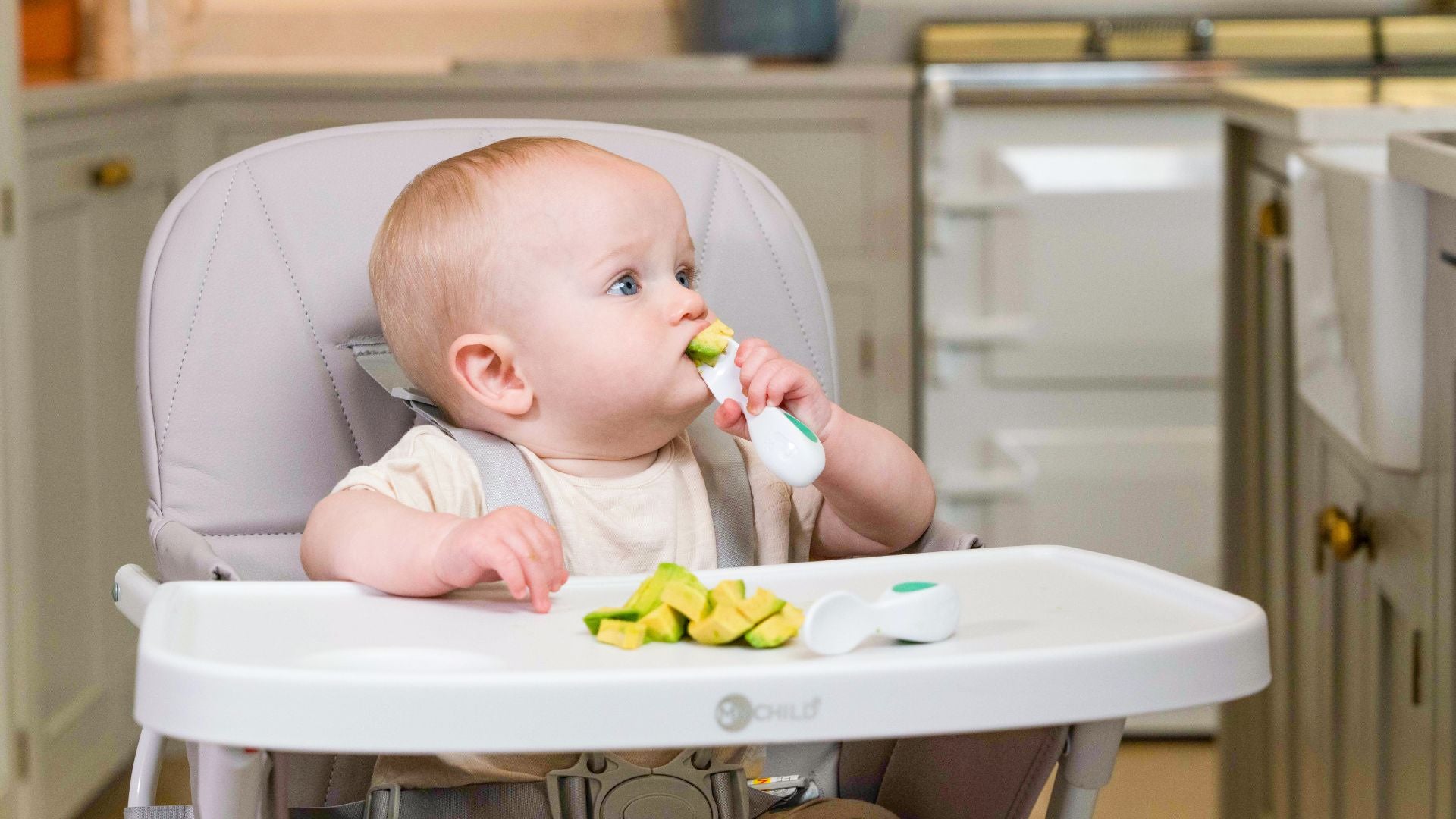Every child will have foods they like and dislike - this is okay! But, as a parent, dealing with a fussy, picky, or choosy eater can be a challenging and worrying experience. You may find yourself wondering if your child is getting enough nutrients, if their limited diet will affect their growth and development, or if you're doing something wrong.
At doddl, we always want to reassure parents that it is completely normal for children to go through this stage of choosy eating.
To gain a better understanding of fussy eating and its causes, we spoke to Claire Burgess, a Family Consultant from Bespoke Family Ltd. Claire shared some fascinating insights into the reasons behind this common behaviour in little ones.
“The reason for our child's reaction to how we behave goes way back to our ancestors when they had to forage for food," Claire explains. "If a family went out foraging, the adult would always eat something that they had brought back first. This was to check that it was safe to eat. If they didn't die or become ill they would then feed this to their child. We are very lucky that we don't have to risk life and limb to check that food is safe any more. Yet this instinct is still there in our children's genetics, telling them to watch the adult in order to know if the food is safe.”
Claire actually suggests using the term "choosy eating" instead of "fussy eating" or "picky eating" as it can help create a more positive outlook on this developmental stage. The good news is that choosy, or fussy eating is a normal part of childhood for many children, and there are strategies you can use to support your child through this phase. In this comprehensive guide, we'll cover everything you need to know about fussy eating, from understanding its causes to practical tips for encouraging healthy eating habits and knowing when to seek additional support.
Understanding fussy eating
What is fussy eating?
Fussy eating, also known as picky or choosy eating, is a common phase that typically begins between 12-18 months and peaks around 3 years old. During this time, children may refuse certain foods, have inconsistent appetites, or show strong preferences for specific textures or flavours.
Why do children become fussy eaters?
There are several causes for picky eating in children including:
- Developmental changes: As children gain more independence, they may assert their autonomy through food choices.
- Neophobia: Children may be naturally cautious about trying new foods, a survival instinct from our ancestors.
- Sensory sensitivities: Some children may be more sensitive to certain textures, flavours, or smells.
- Environmental factors: Family dynamics, mealtime routines, and the way food is presented can influence eating behaviours.
How can I encourage healthy eating habits?
Encouraging healthy eating habits in children can be one of the trickiest aspects of parenting, as it sets the foundation for lifelong nutrition and wellness. While dietary challenges for kids are a common issue, there are several strategies to help with fussy eating that you can use:
Create a positive mealtime environment

Make mealtimes a pleasant, social experience by focusing on positive language, conversation and family bonding rather than solely on what your child is eating.
- Avoid pressuring, bribing, or rewarding your child with food, as this can create negative associations.
To further understand how to create a positive mealtime environment and encourage children to try new foods, we spoke to Stacey Zimmels, a feeding & swallowing specialist and Speech and Language Therapist from FeedEatSpeak. Stacey provided us with her top tips for helping children eat new foods.
According to Stacey, offering new foods regularly and repeatedly is key, as studies show that exposure to foods is crucial in getting children to accept them. She also emphasises the importance of eating together, as children are more likely to try something new if they see someone else eating it. However, she cautions against pressuring or bribing children to eat, as this may bring short-term success but isn't shown to help with food acceptance in the long term.
Offer a variety of foods and be patient
- Continue to offer a range of foods, even if your child has previously rejected them. It can take multiple exposures before a child accepts a new food.
- Ensure there's always at least one familiar food on their plate that they enjoy.
Be a positive role model
Demonstrate healthy eating habits by enjoying a variety of foods yourself and avoiding negative comments about certain ingredients.
- Try and create a family mealtime environment whenever possible to showcase positive mealtime behaviours together.
Trust your child's hunger and fullness cues
- Respect your child's signals when they indicate they are full.
- Avoid pressuring them to eat more, as this can override their natural self-regulation to stop eating.
Signs Your Child Has Eaten Enough
It's essential to trust your child's hunger and fullness cues. Some signs that your child has had enough to eat include:
Saying "no" or indicating they are finished
- Pushing their plate away
- Turning their head when offered more food
- Keeping their mouth closed when food is offered
- Holding food in their mouth without chewing or swallowing
- Spitting food out repeatedly
- Crying or screaming
- Gagging or retching
If you notice these signs, avoid pressuring your child to eat more. Respect their signals and end the meal calmly.
How Independent Eating Can Help Reduce Fussy Eating

Encouraging your child to eat independently can be a powerful tool in reducing fussy eating. When children are given the opportunity to explore food at their own pace and make choices about what they eat, they are more likely to develop a positive relationship with food. Here are some ways you can promote independent eating:
Offer finger foods
Provide a variety of healthy finger foods that your child can easily grasp and bring to their mouth, such as soft fruits, steamed vegetables, or small pieces of chicken or cheese. Allowing your child to self-feed with finger foods can help them become more comfortable with different textures and flavours.
Use child-friendly utensils
Introduce utensils designed specifically for little hands, like doddl toddler cutlery, which can make self-feeding easier and more enjoyable for your child. These ergonomic utensils promote independence and build confidence at mealtimes, making your child more receptive to trying new foods.
Involve your child in meal preparation

Get your child involved in age-appropriate food preparation tasks such as washing fruits and vegetables, tossing a salad, or helping to set the table. When children feel invested in the meal-making process, they are more likely to show interest in the food and be willing to try new things.
You can even let your child safely chop up ingredients using tools designed for young children. Our toddler knife has a safe, easy-to-grip handle and a blade that allows children to cut through a variety of foods without the risk of injury. By involving your child in the cooking process and providing them with safe, kid-friendly utensils, you can help foster their interest in food and encourage them to be more adventurous eaters.
With the right tools and a supportive environment, your child can learn to enjoy a variety of foods and overcome fussy eating tendencies. Remember, every child develops at their own pace, so be patient and celebrate the small victories along the way.
When to Seek Additional Support
While fussy eating is common, there may be instances when additional support is necessary. Consider seeking guidance from your GP or a feeding specialist if:
- Your child's fussy eating persists for an extended period (several months) with little improvement.
- Your child eats a very limited number of foods (less than 15-20) or is particularly brand-specific.
- Your child refuses entire food groups or textures.
- Mealtimes cause significant distress or discomfort for your child, such as gagging or difficulty chewing.
- You have concerns about your child's growth or weight.
- Your child shows signs of sensory sensitivities that impact their eating or other daily activities.
Remember, every child is unique, and there is no one-size-fits-all approach to managing fussy eating. Trust your instincts and don't hesitate to reach out for support when needed.
Supporting your child through fussy eating
Navigating fussy eating can be challenging, trust us. But, with a dash of patience, a sprinkle of understanding, and a toolbox full of creative strategies, you can support your little one in developing a healthy and exciting relationship with food. Remember, this phase is often a normal part of your child's development, and most children will eventually outgrow it – so take a deep breath and enjoy the journey!
Focus on creating positive mealtime experiences, offering a variety of foods, and trusting your child's cues. If you have persistent concerns, don't hesitate to seek guidance from healthcare professionals or feeding specialists. With the proper support and resources, you can help your child establish lifelong healthy eating habits.
So, put on your adventurer's hat, grab your doddl toddler feeding products, and get ready to embark on a fun-filled journey of taste, texture, and culinary curiosity with your little one. The path to food adventure awaits!




Leave a comment
This site is protected by hCaptcha and the hCaptcha Privacy Policy and Terms of Service apply.